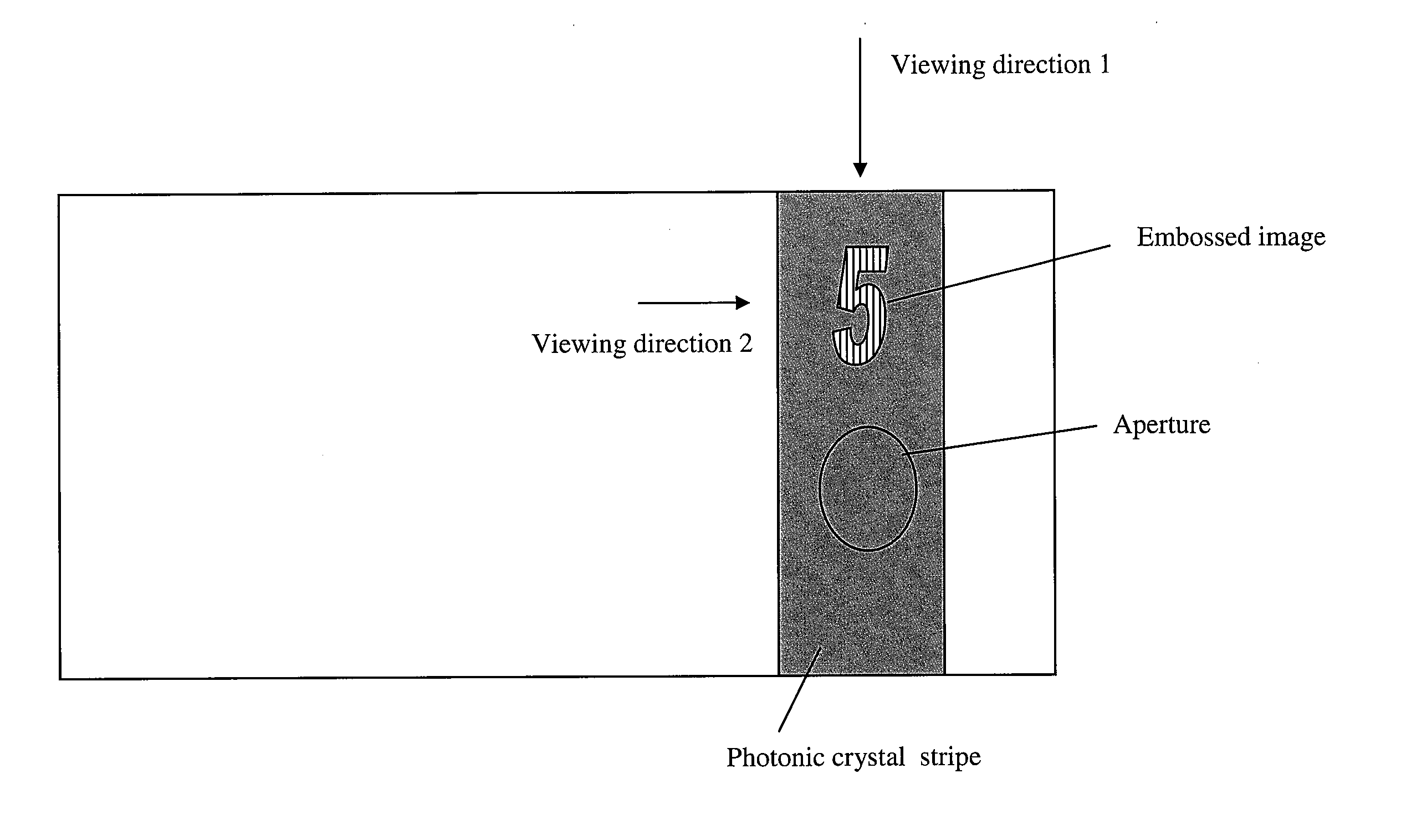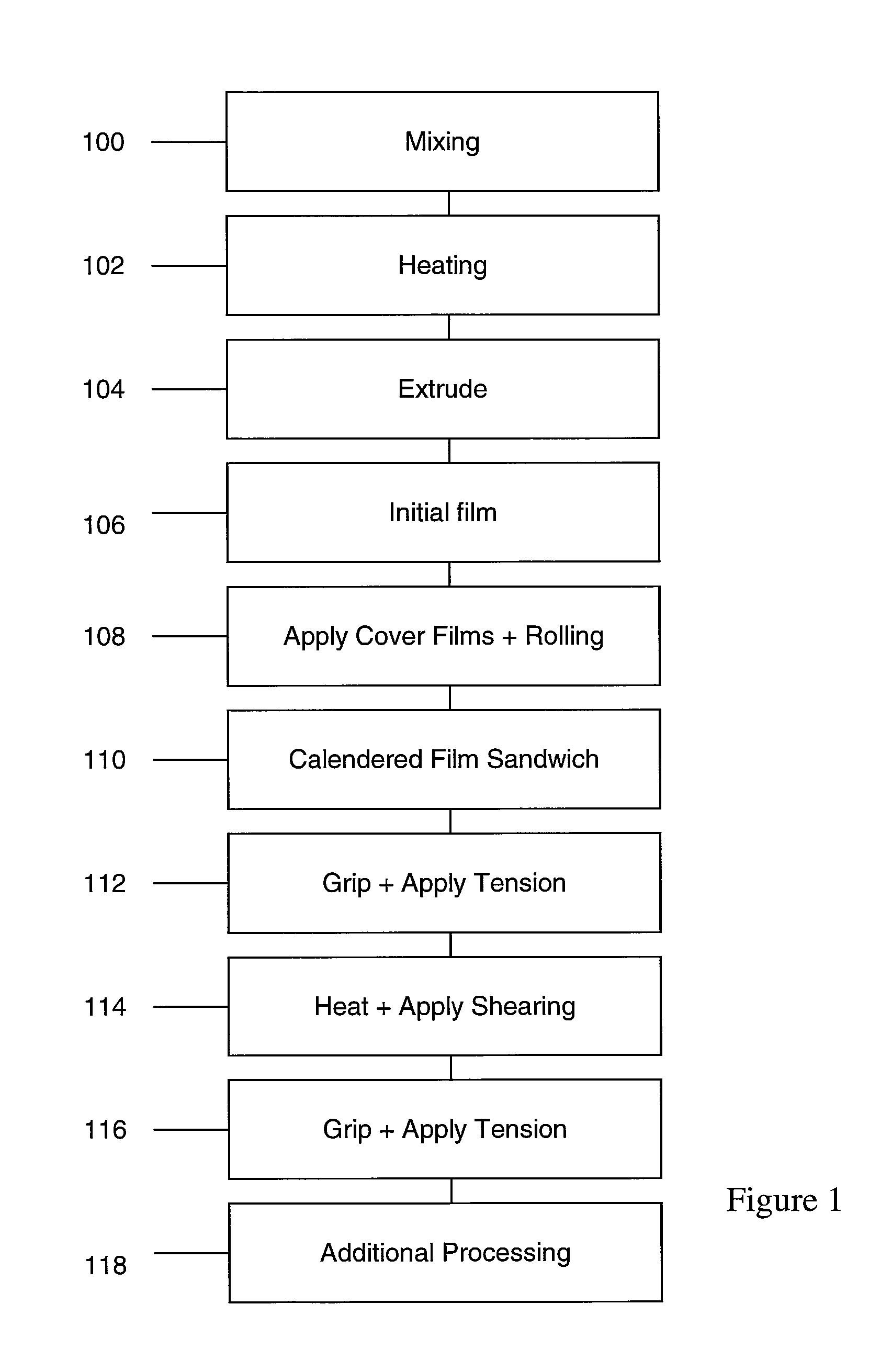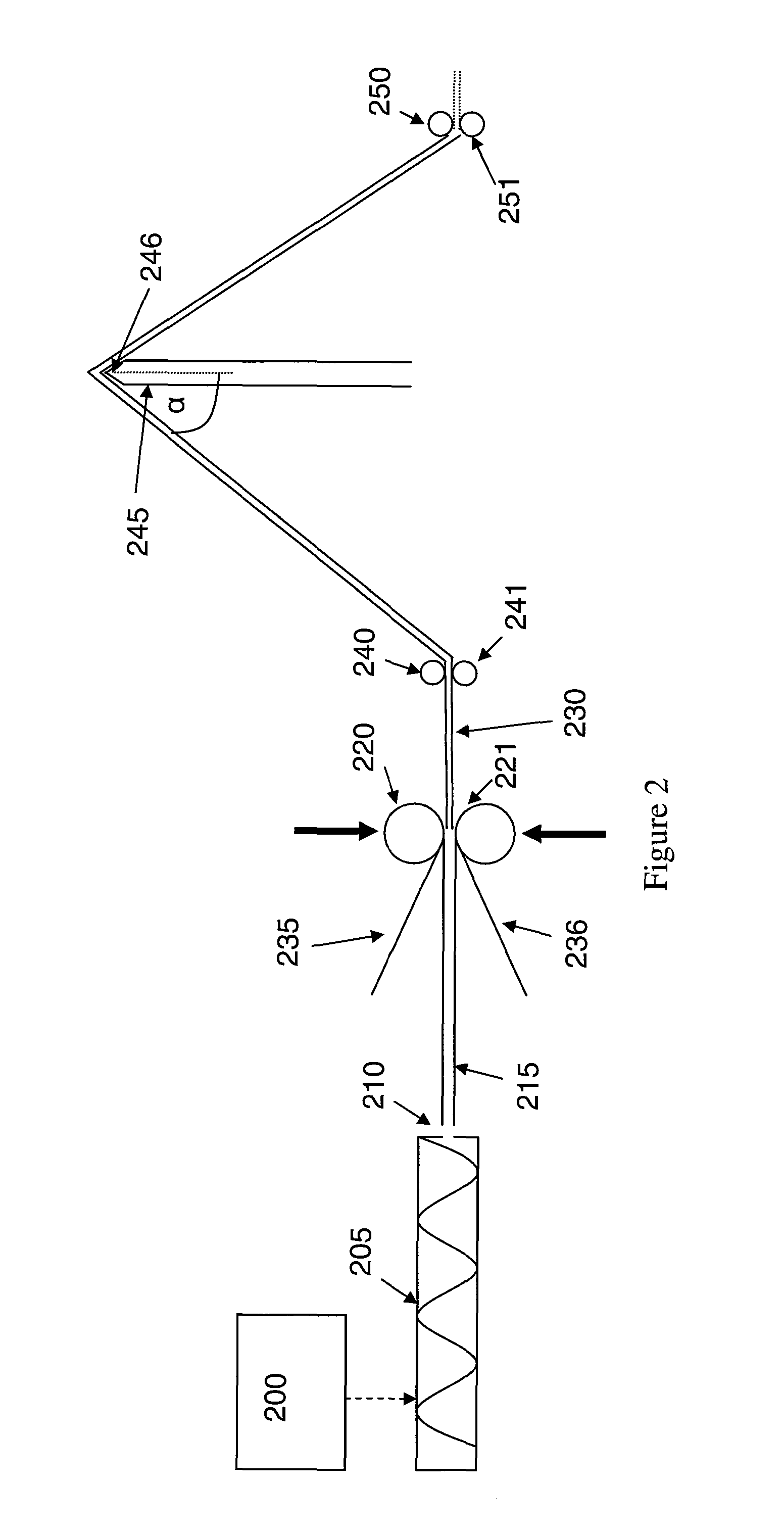Method of forming a photonic crystal material
a technology of photonic crystal material and forming method, which is applied in the direction of magnetic recording, spectral modifier, dough sheeter/rolling machine/rolling pin, etc., can solve the problems of reducing or even completely losing the optical effect of the photonic crystal material, reducing the efficiency of production of such films on an industrial scale, and so as to achieve the effect of ensuring the long-term stability of the optical effect, ensuring the long-
- Summary
- Abstract
- Description
- Claims
- Application Information
AI Technical Summary
Benefits of technology
Problems solved by technology
Method used
Image
Examples
Embodiment Construction
[0072]We now describe a method, together with suitable apparatus, for producing a thin film of photonic crystal material which exhibits a strong angularly dependent colour effect. We then describe the use of the film in various example applications related to security devices and documents.
Materials
[0073]The present invention is not intended to be limited by the specific use of certain materials and this example now illustrates one practical implementation. As has been explained known methods of forming photonic crystal materials include micro fabrication and self-assembly. Due to the complexities of micro fabrication processes, it has become preferred in the art to use self-assembly. Synthetic opal structures can be formed by such a mechanism where uniformly sized sub-micron siliceous spheres are organised through a sedimentation process in a face-centred cubic crystal structure. Likewise, inverse-opal structures can also be formed by the dissolution of the siliceous spheres. Whils...
PUM
| Property | Measurement | Unit |
|---|---|---|
| thickness | aaaaa | aaaaa |
| thickness | aaaaa | aaaaa |
| temperature | aaaaa | aaaaa |
Abstract
Description
Claims
Application Information
 Login to View More
Login to View More - R&D
- Intellectual Property
- Life Sciences
- Materials
- Tech Scout
- Unparalleled Data Quality
- Higher Quality Content
- 60% Fewer Hallucinations
Browse by: Latest US Patents, China's latest patents, Technical Efficacy Thesaurus, Application Domain, Technology Topic, Popular Technical Reports.
© 2025 PatSnap. All rights reserved.Legal|Privacy policy|Modern Slavery Act Transparency Statement|Sitemap|About US| Contact US: help@patsnap.com



